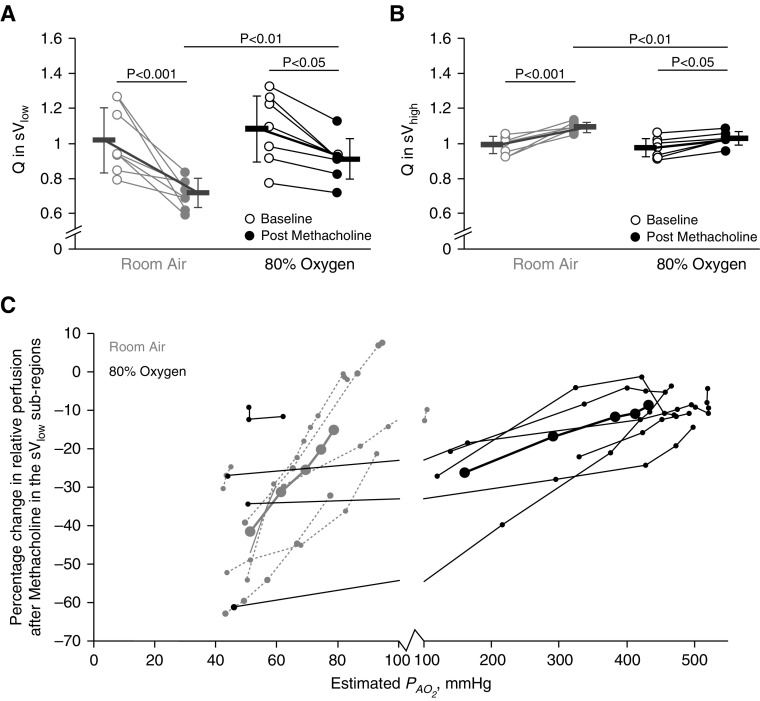Figure 3.
Regional perfusion: effect of methacholine and 80% oxygen. Gray markers indicate room air conditions, and black indicates 80% oxygen. Open circles represent baseline, and closed circles represent postmethacholine data. P values reflect the results from pairwise comparisons. (A) The mean relative perfusion in the lowest quartile of ventilating lung (sVlow) at baseline and after methacholine under both room air and 80% oxygen conditions. During room air, perfusion in the sVlow region significantly decreased after methacholine. The same effect was seen under 80% oxygen, but to a lesser degree. (B) The perfusion in the median and highest quartiles of ventilating lung (sVhigh) increased after methacholine under both room air and 80% oxygen conditions. The postmethacholine perfusion in the sVhigh regions was greater under room air conditions than with 80% oxygen. (C) The percentage change in relative perfusion after methacholine within the sVlow subregions plotted against the predicted postmethacholine regional alveolar oxygen partial pressure (PaO2) are plotted in gray for room air conditions and in black for 80% oxygen conditions. In A and B, the bold lines with error bars represent mean and SD values within each subregion. In C, the bold black and solid gray lines with large closed circles represent mean values. Under room air conditions, in the hypoxic subregions (PaO2 < 83 mm Hg), the average reduction in perfusion was 33.5 ± 15.7%. Under 80% oxygen conditions, the hypoxic subregions had an average reduction in perfusion of 21.7 ± 18.5%. In the hyperoxic regions (PaO2 > 150 mm Hg), the reduction in perfusion was 12.2 ± 8.3%. The lowest ventilating subregions had a significantly greater reduction in perfusion under room air than with 80% oxygen conditions. = mean relative perfusion.

